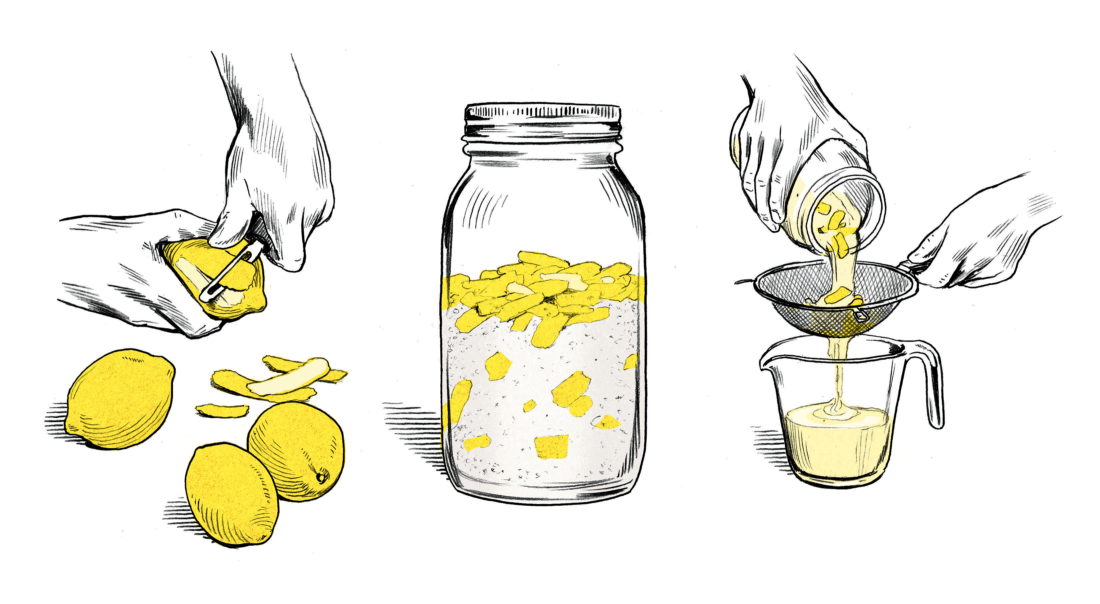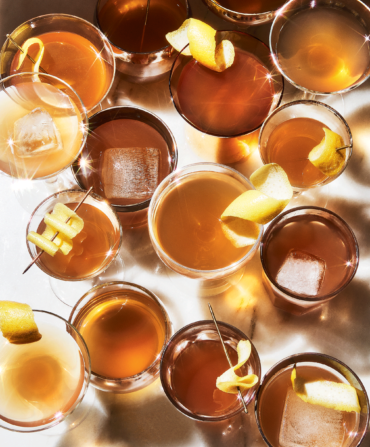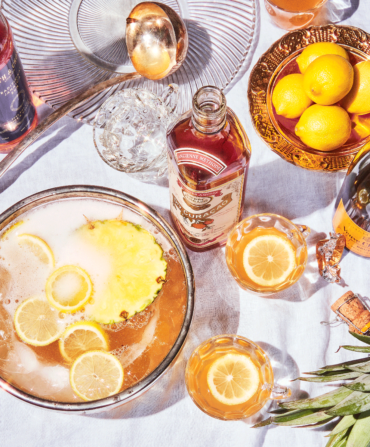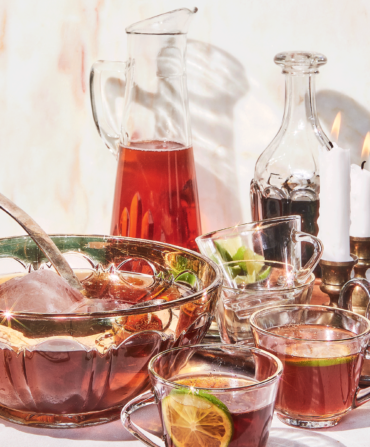Oleo-saccharum sounds like an ancient nostrum to cure an obscure disease, but it’s actually a mixture of sugar and citrus that brightens a punch. Its use has been revived by historian David Wondrich, who discovered that early punch makers would rub whole citrus fruits on a stiff cone of sugar, infusing the sugar with some of the zesty tang of the oils in the peels. An easier, more convenient way to prepare an oleo-saccharum (oleo, for short) is to [1] peel the citrus, then [2] toss the peels with granulated sugar in a sealed container, such as a mason jar. Let it sit for twelve to twenty-four hours, shaking from time to time; the sugar will extract oils from the peels. [3] Pour the same amount of water as the original amount of sugar into the jar, shake to dissolve, and strain. You’ll be left with a syrup that adds a welcome layer of citrusy goodness and an ineffable crispness to the punch. It’s a minor hassle with major returns.
Four Classic Punch Recipes
From the 1600s: Classic West Indian Punch
From the 1700s: Quoit Club Punch
From the 1900s: Champagne Punch
From the 2000s: Satsuma Punch








